- Department of Physics, Stevens Institute of Technology, Hoboken, NJ, United States
The phenomenon of transparency, conventionally studied in three and higher level atomic systems, is extended to the case of a two-level system (TLS), where we use a semiclassical framework to describe the transparent propagation of classical fields in a medium of TLS scatterers. We demonstrate a new form of transparency with fast pulses, accounting for the initial state of the TLS, which we call phase-dependent transparency. Using the phenomenon of photon locking, we showed that TLSs initialized in maximum coherence states exhibit transparency to resonant fields when there is phase-matching between the phase of the atomic coherence and that of the probe field. An application to the problem of all-optical switching is also discussed, where on-demand transmission is generated by controlling the relative phase between a
Introduction
The coherent interaction of matter and light can lead to the emergence of quantum interference between multiple pathways, such as electronic excitation pathways (Fleischhauer et al., 2005), in turn revealing novel quantum phenomena that is of tremendous interest today in the fields of quantum information science and emerging quantum technologies (Lukin et al., 2001; Fleischhauer and Lukin, 2000; Lukin et al., 2000; Körber et al., 2018; Sangouard et al., 2011; Kimble, 2008). An example of one such phenomena is induced transparency, which originated in the study of light-matter interaction in three and higher level atomic systems (Petrosyan et al., 2011; Slusher and Gibbs, 1972). Today, induced transparency has been extended to a large number of systems including optomechanical systems (Weis et al., 2010; Agarwal and Huang, 2010; Xiong and Wu, 2018), plasmonics (Zhang et al., 2008; Kekatpure et al., 2010; Zhu et al., 2014), and coupled microresonators (Naweed et al., 2005; Guo et al., 2021; Huang et al., 2022; Yang et al., 2009). However, we do not see similar results for the simple case of the two-level system (TLS), in the case of observing EIT-like transparency without the inclusion of additional structures for the TLS. For example, the presence of mechanical vibrations in a medium of two level scatterers along with a polychromatic driving field can produce partial and full transparency in the TLS medium (Radeonychev et al., 2006; Radeonychev et al., 2020). More generally, polychromatic driving can lead to the presence of additional scattering channels-effectively expanding the state space of our TLS in the frequency domain and leading to the emergence of EIT-like transparency (Kälin et al., 2004). Additionally, induced transparency in two-level atoms has been realized in the presence of self-induced transparency (SIT) effects, where nearly lossless transmission is observed for pulsed light that has the form of an optical soliton (Chakravarty, 2016). The phenomenon of SIT was first discovered by McCall and Hahn (McCall and Hahn, 1969), where coherent, resonant, fast pulses propagate with anomalously low energy losses in a medium of two-level atoms. We distinguish the form of transparency developed in this paper from SIT, noting that it has more in common with EIT.
Electromagnetically induced transparency (EIT) (Fleischhauer et al., 2005; Marangos, 1998; Harris, 1997; Finkelstein et al., 2023) is one of the most famous examples of transparency, caused by destructive interference of probability amplitudes from multiple pathways between two states in a multilevel system dressed with strong coupling fields. The optical susceptibilities of EIT setups are shown to be sensitive to the phases of driving fields (Sahrai et al., 2007; Yang et al., 2010; Abi-sallouma et al., 2007; Joshi, 2009) with cancellation/amplification of nonlinearities corresponding to dispersive and absorptive effects dependent on the relative phases between different field components. As argued in (Abi-sallouma et al., 2007), the dependence of EIT on quantum interference implies that EIT must then also be dependent on a phase term, owing to the fact that the quantum interference is a result of a coherent interaction. The identification of this phase term would imply the presence of a tunability from transparency to absorption which can even persist in the steady-state regime for more complex systems (Yang et al., 2010; Hu et al., 2005). While EIT, for the case of the 3-level Lambda system, is not sensitive to the relative phase between the pump and probe fields in the steady state limit, this is not the case in the transient regime where there can be a relative phase between the atomic dipole and that of the fields (Abi-sallouma et al., 2007). In this regime, EIT can temporarily become electromagnetically induced absorption (EIA) (Lezama et al., 1999; Akulshin et al., 1998; Korsunsky et al., 1999) due to the destructive interference between the multiple pathways becoming constructive (Abi-sallouma et al., 2007). The ability to engineer such interference effects is a major goal in quantum control theory. Techniques such as pulse shaping and frequency modulation are highly effective in generating dark-state based transfer and interference effects in three and higher level systems, leading to phenomena like adiabatic population transfer (Chathanathil et al., 2023) and EIT respectively. More broadly, quantum control techniques have been instrumental in realizing robust state transfer, especially in the development of one- and two-qubit gates that sustain high fidelity in the presence of stochastic drift and open system effects (Koch et al., 2022). The impact of Markovian and non-Markovian noise on qubit control is examined in (Delben et al., 2023), including scenarios where closed-system quantum control schemes break down, and the use of fast-control strategies for reducing decoherence effects.
A similar concept as phase-dependent transient EIT is used in our work where a relative phase between the atomic coherence and the probe field is used to generate non-steady state transparency. In principle, when the populations in both states of a TLS are equal, the outcome of equal rates of stimulated emission and absorption should result in transparency. We find that this basic principle can be satisfied, but is dependent on the state of the atomic density matrix and the phase of the probe light. Indeed, we show in this work that the phase of the probe field can be chosen to result in no energy transfer if the TLS is in a maximum coherence superposition state and the probe is resonant while being in phase with the atomic coherence. The invariance of the atomic density matrix to a perturbation that satisfies the relative phase condition is called photon locking (Tannor, 2007; Vreeker et al., 1986; Bayer et al., 2009; Bodey et al., 2019) and is implemented to realize transparent propagation of probe pulses in a medium of TLS scatterers. We call the resulting transparency phenomena phase-dependent transparency (PDT). In this work, we also propose a protocol to realize absorptive all-optical switching (Yadav and Bhattacherjee, 2022; Volz et al., 2012) where a relative phase between the probe field and atomic coherence can be used to tune between absorption and transmission. All-optical switching has been realized, based on the principle of perfect photon absorption, in cavity QED schemes with cold atoms interacting with a cavity driven by two fields with some constant relative phase (Agarwal et al., 2016; Guo et al., 2024). One extremely important research area is the realization of optical switching with single-photons (Volz et al., 2012; Shen and Fan, 2005), though this is beyond the scope of this work. Our protocol uses a semi-classical scheme with TLSs interacting with classical pulses, allowing on-demand switching between absorption and transparency in the transient regime.
Materials and methods
We consider the problem of propagation of hundred
where we defined the complex Rabi frequency
And introduce the driving vector
where we used the Feynman-Vernon-Hellwarth representation (Tannor, 2007), modified to take into account spontaneous emission. To model the propagation of a probe pulse through a cold vapor of two level atoms we use the semiclassical Maxwell-Bloch equations in the slow-varying-envelope-approximation (SVEA). Assuming that the probe pulse propagates paraxially with a pulse duration much larger than the oscillation frequency
We consider the evolution of the probe pulse in response to the macroscopic polarization consisting of the dipole moments of the atomic vapor
Results
From Equation 3, we obtain an important result. With the assumption that the pulse duration is small enough that there is negligible change to the Bloch vector from spontaneous emission, when
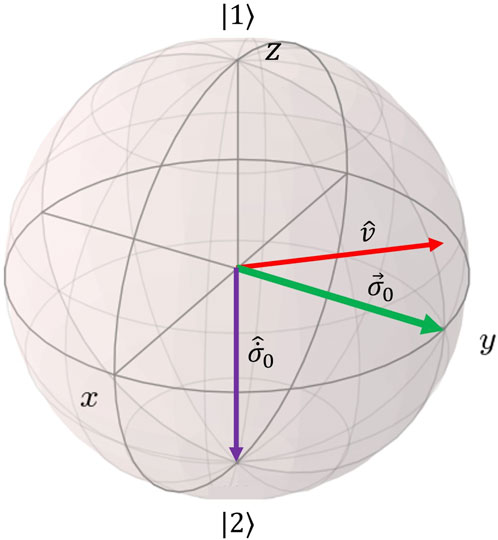
Figure 1. Demonstration of the Bloch vector
By itself, this condition is insufficient for us to obtain transparency. While the atom undergoes no dynamics from the driving vector when the condition
The satisfaction of the above condition (Equation 5) results in phase-dependent transparency, where the scattering processes that result in population shift upwards (absorption) and downwards (stimulated emission) have equal probability amplitudes (in magnitude and phase) and exactly cancel, resulting in no phase shifts to the field. Using the equations of motion for the pulse envelope
For the equations of motion of the probe pulse, we utilize the retarded Green’s function to propagate the solution of Equation 3 and Equation 4 using the initial conditions at
We also obtain the below integral equation for
which when substituted into Equation 6, separates the free polarization component of the Rabi frequency,
To verify the transmission/absorption behavior for different values of the initial phase
In the transparent case
In the absorptive case
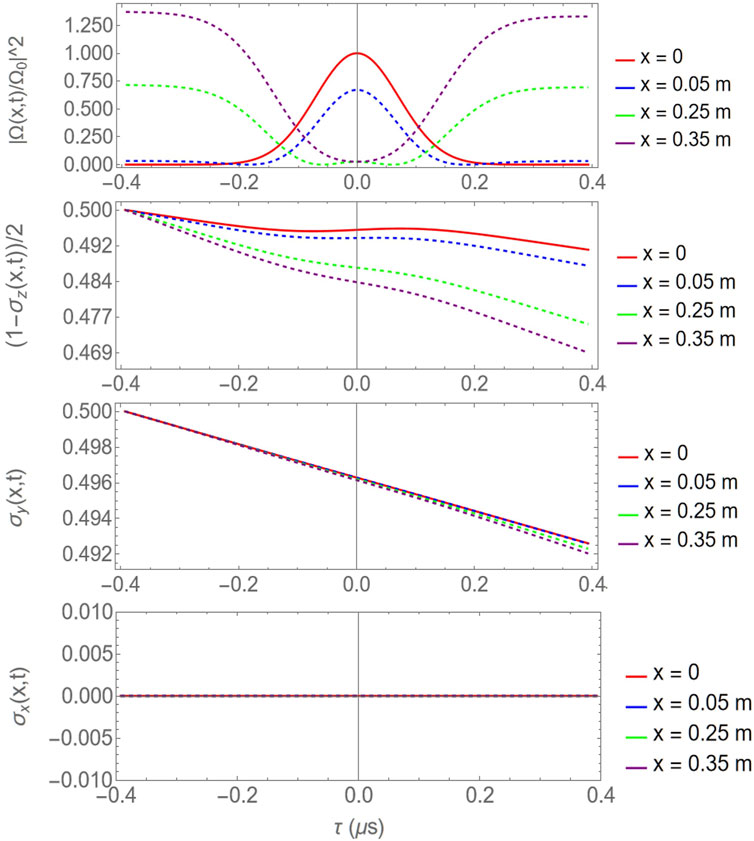
Figure 2. Numerics of the normalized probe intensity (top) and Bloch vector components
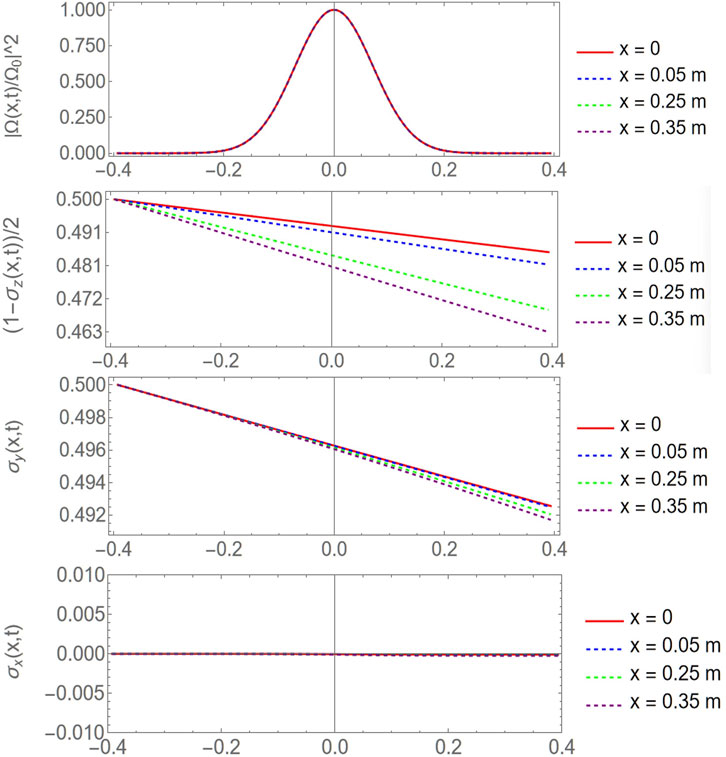
Figure 3. Numerics of the normalized probe intensity (top) and Bloch vector components
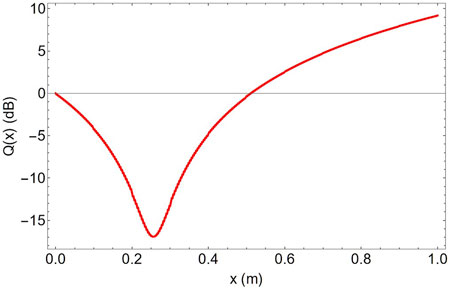
Figure 4. Normalized intensity-time integral
The dispersive behavior observed in this regime arises from the coherent interference between the probe and the free polarization field. As shown in the plots of the temporal quantities (Equation 9) in Figure 5, for propagation distances
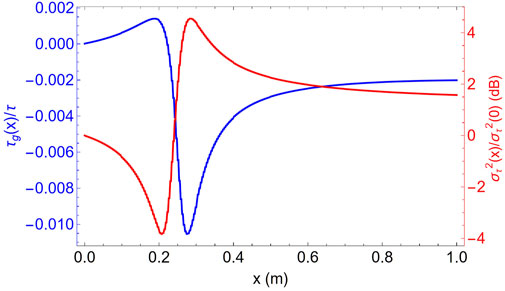
Figure 5. Normalized group delay
Phase-dependent transparency is obtained for the photon locking case
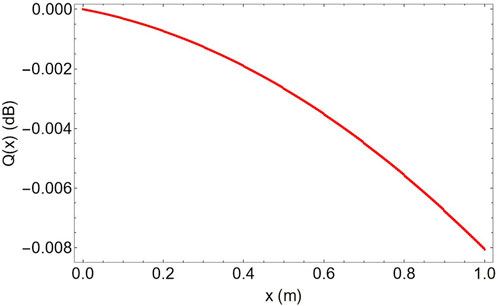
Figure 6. Normalized intensity-time integral
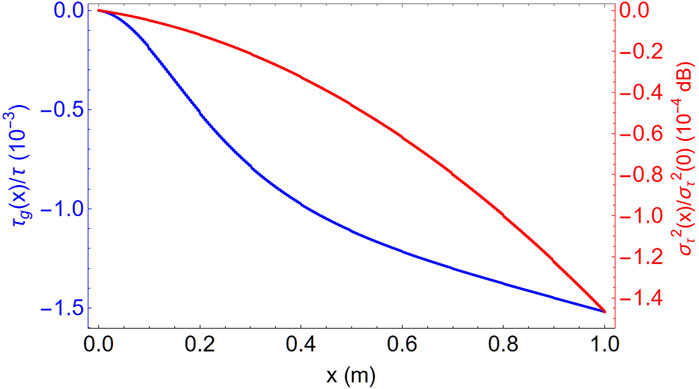
Figure 7. Normalized group delay
Discussion
The transparency phenomenon is robust to the probe detuning to an extent, see Figure 8. For
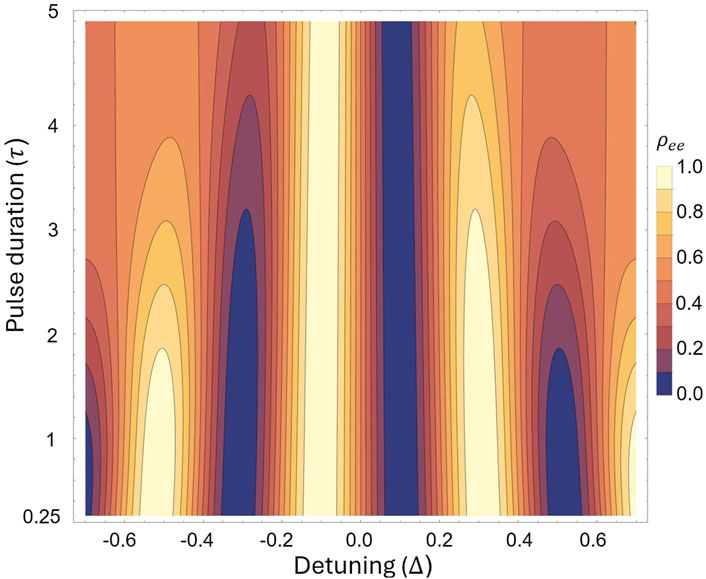
Figure 8. Plot of the excited state population
The degradation of phase-dependent transparency (PDT) in the presence of nonzero detuning implies that a thermal velocity distribution in the atomic medium will similarly be detrimental. To examine how a distribution of detunings affects transparency even when the phase-locking condition is satisfied, we introduce a velocity distribution
We can see that all terms in Equation 10 are of the form
We have assumed the case of a homogeneous continuous vapor of two-level atoms in our model and assumed no inhomogeneous effects including variations in the spatial profile of the beam, frequency shifts of the atoms and the presence of background scatterer species that produce phase fluctuations in the probe. Due to the coherent nature of photon locking, any effects that disturb the coherent phase relationship between the atoms in the medium and the pulse will degrade PDT. While these effects are beyond the scope of this paper, we detail how our model can be extended to incorporate inhomogeneities for the interested reader. Position-dependent drifts in the transition frequencies of the atoms can be introduced as randomly assigned c-number detunings
As previously mentioned, the transparency effect is sustained when the condition
The results with PDT yields important conclusions on how we can use the phase of light fields to induce transparency by making the scattering amplitudes for absorption and stimulated emission equal in magnitude and phase. We remark that is different from EIT where the scattering amplitudes for absorption from different pathways sum to zero due to them being
All-optical switching
The results we developed here have applications in the development of optical switches (Yadav and Bhattacherjee, 2022; Volz et al., 2012). Indeed, phase dependent transparency could provide an easy way to generate on-demand transient absorption and transparency through control of the relative phase between the probe field and atomic coherence. To illustrate this, we introduce a conceptual scheme for all-optical switching in Figure 9. A pump (red) and probe (green) pulse are prepared and joined at the third arm to generate a pulse sequence described by the tuple
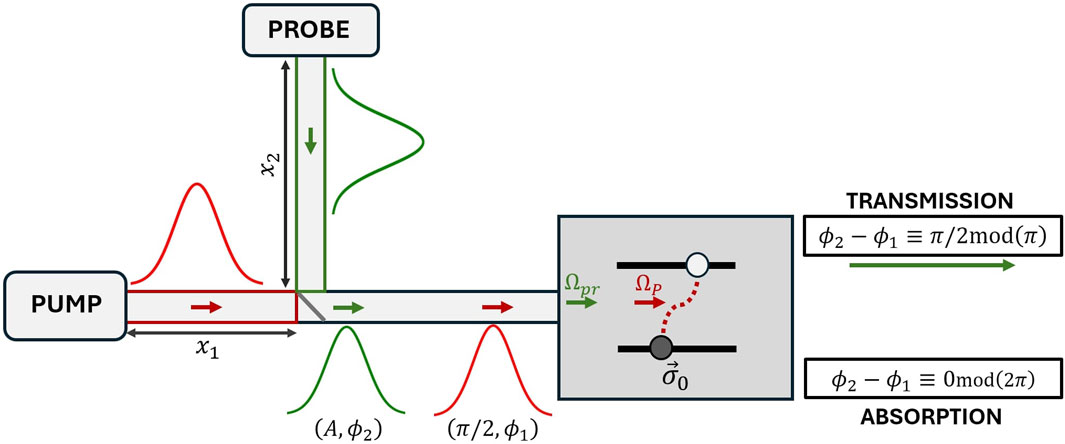
Figure 9. Protocol for all-optical switching using phase-dependent transparency in two-level systems.
The plot of the switching contrast, calculated with Equation 11, in Figure 10 shows that a maximum contrast of
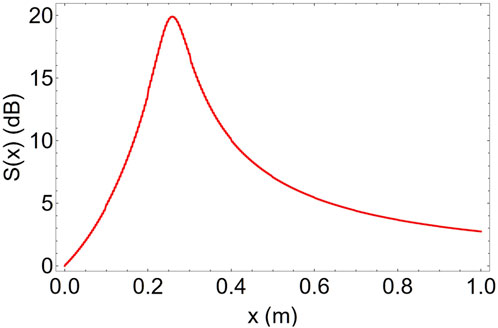
Figure 10. Switching contrast
We have theoretically demonstrated a new form of non-steady state transparency in the two-level system (TLS) with fast hundred ps pulses, which we call phase-dependent transparency (PDT), that is realized when the TLS is in a maximum coherence state and when the relative phase between the probe pulse and atomic coherence is a multiple of
Data availability statement
The original contributions presented in the study are included in the article/Supplementary Material, further inquiries can be directed to the corresponding author.
Author contributions
AR: Writing – original draft, Writing – review and editing. SM: Conceptualization, Funding acquisition, Investigation, Methodology, Supervision, Writing – review and editing.
Funding
The author(s) declare that financial support was received for the research and/or publication of this article. We acknowledge funding support from the Office of Naval Research through award N00014-22-1-2374.
Conflict of interest
The authors declare that the research was conducted in the absence of any commercial or financial relationships that could be construed as a potential conflict of interest.
Generative AI statement
The author(s) declare that no Generative AI was used in the creation of this manuscript.
Publisher’s note
All claims expressed in this article are solely those of the authors and do not necessarily represent those of their affiliated organizations, or those of the publisher, the editors and the reviewers. Any product that may be evaluated in this article, or claim that may be made by its manufacturer, is not guaranteed or endorsed by the publisher.
Supplementary material
The Supplementary Material for this article can be found online at: https://www.frontiersin.org/articles/10.3389/frqst.2025.1526469/full#supplementary-material
Data Sheet 1 | Alternate derivation of the phase matching condition using the Dyson series expansion.
References
Abi-sallouma, T., Davis, C. L. J. P., Elliott, E., and Narducci, F. A. (2007). J. Mod. Opt. 54, 2459. doi:10.1080/09500340701742617
Agarwal, G. S., Di, K., Wang, L., and Zhu, Y. (2016). Perfect photon absorption in the nonlinear regime of cavity quantum electrodynamics. Phys. Rev. A 93, 063805. doi:10.1103/physreva.93.063805
Agarwal, G. S., and Huang, S. (2010). Electromagnetically induced transparency in mechanical effects of light. Phys. Rev. A 81, 041803. doi:10.1103/physreva.81.041803
Akulshin, A., Barreiro, S., and Lezama, A. (1998). Electromagnetically induced absorption and transparency due to resonant two-field excitation of quasidegenerate levels in Rb vapor. Phys. Rev. A 57, 2996–3002. doi:10.1103/physreva.57.2996
Bayer, T., Wollenhaupt, M., Sarpe-Tudoran, C., and Baumert, T. (2009). Robust photon locking. Phys. Rev. Lett. 102, 023004. doi:10.1103/physrevlett.102.023004
Bodey, J. H., Stockill, R., Stockill, R., Denning, E. V., Denning, E. V., Gangloff, D. A., et al. (2019). npj Quantum Inf. 5, 1. doi:10.1038/s41534-019-0206-3
Chakravarty, S. (2016). Soliton solutions of coupled maxwell–bloch equations. Phys. Lett. A 380, 1141–1150. doi:10.1016/j.physleta.2015.10.031
Chathanathil, J., Ramaswamy, A., Malinovsky, V. S., Budker, D., and Malinovskaya, S. A. (2023). Chirped fractional stimulated raman adiabatic passage. Phys. Rev. A 108, 043710. doi:10.1103/physreva.108.043710
Delben, G. J., Beims, M. W., and da Luz, M. G. E. (2023). Control of a qubit under markovian and non-Markovian noise. Phys. Rev. A 108, 012620. doi:10.1103/physreva.108.012620
Finkelstein, R., Bali, S., Firstenberg, O., and Novikova, I. (2023). A practical guide to electromagnetically induced transparency in atomic vapor. New J. Phys. 25, 035001. doi:10.1088/1367-2630/acbc40
Fleischhauer, M., Imamoglu, A., and Marangos, J. P. (2005). Electromagnetically induced transparency: optics in coherent media. Rev. Mod. Phys. 77, 633–673. doi:10.1103/revmodphys.77.633
Fleischhauer, M., and Lukin, M. D. (2000). Dark-state polaritons in electromagnetically induced transparency. Phys. Rev. Lett. 84, 5094–5097. doi:10.1103/physrevlett.84.5094
Guo, M.-D., Wu, Y.-J., Li, N., Li, H.-F., and Zhou, C.-X. (2024). Optical switch based on tunable perfect photon absorption. Phys. Lett. A 505, 129456. doi:10.1016/j.physleta.2024.129456
Guo, S.-T., Zhang, Y.-H., Wu, L.-L., Ye, M.-Y., and Lin, X.-M. (2021). Transition between coupled-resonator-induced transparency and absorption. Phys. Rev. A 103, 033510. doi:10.1103/physreva.103.033510
Harris, S. E. (1997). Electromagnetically induced transparency. Phys. Today 50, 36–42. doi:10.1063/1.881806
Hu, X.-M., Zou, J.-H., Li, X., Du, D., and Cheng, G.-L. (2005). Amplitude and phase control of trichromatic electromagnetically induced transparency. J. Phys. B Atomic, Mol. Opt. Phys. 38, 683–692. doi:10.1088/0953-4075/38/6/007
Huang, X., Wang, T.-J., and Wang, C. (2022). Electromagnetically induced transparency and absorption in directly coupled whispering-gallery mode microcavities. IEEE Photonics J. 14, 1–8. doi:10.1109/jphot.2022.3151506
Joshi, A. (2009). Phase-dependent electromagnetically induced transparency and its dispersion properties in a four-level quantum well system. Phys. Rev. B 79, 115315. doi:10.1103/physrevb.79.115315
Kälin, M., Gromov, I., and Schweiger, A. (2004). Transparency in two-level spin systems induced by a longitudinal field. Phys. Rev. A 69, 033809. doi:10.1103/physreva.69.033809
Kekatpure, R. D., Barnard, E. S., Cai, W., and Brongersma, M. L. (2010). Phase-coupled plasmon-induced transparency. Phys. Rev. Lett. 104, 243902. doi:10.1103/physrevlett.104.243902
Koch, C. P., Boscain, U., Calarco, T., Dirr, G., Filipp, S., Glaser, S. J., et al. (2022). Quantum optimal control in quantum technologies. Strategic report on current status, visions and goals for research in Europe. EPJ Quantum Technol. 9, 19. doi:10.1140/epjqt/s40507-022-00138-x
Körber, M., Morin, O., Langenfeld, S., Neuzner, A., Ritter, S., and Rempe, G. (2018). Decoherence-protected memory for a single-photon qubit. Nat. Photonics 12, 18–21. doi:10.1038/s41566-017-0050-y
Korsunsky, E., Leinfellner, N., Huss, A., Baluschev, S., and Windholz, L. (1999). Phase-dependent electromagnetically induced transparency. Phys. Rev. A 59, 2302–2305. doi:10.1103/physreva.59.2302
Lezama, A., Barreiro, S., and Akulshin, A. M. (1999). Electromagnetically induced absorption. Phys. Rev. A 59, 4732–4735. doi:10.1103/physreva.59.4732
Lipsich, A., Barreiro, S., Akulshin, A. M., and Lezama, A. (2000). Absorption spectra of driven degenerate two-level atomic systems. Phys. Rev. A 61, 053803. doi:10.1103/physreva.61.053803
Lukin, M. D., Fleischhauer, M., Cote, R., Duan, L. M., Jaksch, D., Cirac, J. I., et al. (2001). Dipole blockade and quantum information processing in mesoscopic atomic ensembles. Phys. Rev. Lett. 87, 037901. doi:10.1103/physrevlett.87.037901
Lukin, M. D., Yelin, S. F., and Fleischhauer, M. (2000). Entanglement of atomic ensembles by trapping correlated photon states. Phys. Rev. Lett. 84, 4232–4235. doi:10.1103/physrevlett.84.4232
Marangos, J. P. (1998). Electromagnetically induced transparency. J. Mod. Opt. 45, 471–503. doi:10.1080/09500349808231909
McCall, S. L., and Hahn, E. L. (1969). Self-induced transparency. Phys. Rev. 183, 457–485. doi:10.1103/physrev.183.457
Naweed, A., Farca, G., Shopova, S. I., and Rosenberger, A. T. (2005). Induced transparency and absorption in coupled whispering-gallery microresonators. Phys. Rev. A 71, 043804. doi:10.1103/physreva.71.043804
Petrosyan, D., Otterbach, J., and Fleischhauer, M. (2011). Electromagnetically induced transparency with rydberg atoms. Phys. Rev. Lett. 107, 213601. doi:10.1103/physrevlett.107.213601
Radeonychev, Y. V., Khairulin, I. R., Vagizov, F. G., Scully, M., and Kocharovskaya, O. (2020). Observation of acoustically induced transparency for -Ray photons. Phys. Rev. Lett. 124, 163602. doi:10.1103/PhysRevLett.124.163602
Radeonychev, Y. V., Tokman, M. D., Litvak, A. G., and Kocharovskaya, O. (2006). Acoustically induced transparency in optically dense resonance medium. Phys. Rev. Lett. 96, 093602. doi:10.1103/physrevlett.96.093602
Ramaswamy, A., Chathanathil, J., Kanta, D., Klinger, E., Papoyan, A., Shmavonyan, S., et al. (2023). Mirrorless lasing: a theoretical perspective. Opt. Mem. Neural Netw. 32, S443–S466. doi:10.3103/s1060992x23070172
Ramaswamy, A., and Malinovskaya, A. (2024). Phase-dependent transparency in a two-level system: supplemental material. Hoboken, NJ, USA: Stevens Institute of Technology.
Sahrai, M., Mahmoudi, M., and Kheradmand, R. (2007). The impact of the relative phase on the transient optical properties of a four-level EIT medium. Phys. Lett. A 367, 408–414. doi:10.1016/j.physleta.2007.03.014
Sangouard, N., Simon, C., de Riedmatten, H., and Gisin, N. (2011). Quantum repeaters based on atomic ensembles and linear optics. Rev. Mod. Phys. 83, 33–80. doi:10.1103/revmodphys.83.33
Shen, J.-T., and Fan, S. (2005). Coherent single photon transport in a one-dimensional waveguide coupled with superconducting quantum bits. Phys. Rev. Lett. 95, 213001. doi:10.1103/physrevlett.95.213001
Slusher, R. E., and Gibbs, H. M. (1972). Self-induced transparency in atomic rubidium. Phys. Rev. A 5, 1634–1659. doi:10.1103/physreva.5.1634
Svidzinsky, A. A., Zhang, X., and Scully, M. O. (2015). Quantum versus semiclassical description of light interaction with atomic ensembles: revision of the maxwell-bloch equations and single-photon superradiance. Phys. Rev. A 92, 013801. doi:10.1103/physreva.92.013801
Volz, T., Reinhard, A., Winger, M., Badolato, A., Hennessy, K. J., Hu, E. L., et al. (2012). Ultrafast all-optical switching by single photons. Nat. Photonics 6, 605–609. doi:10.1038/nphoton.2012.181
Vreeker, R., Glasbeek, M., Sleva, E., and Zewail, A. (1986). Phase locking of molecular two-level quantum systems: application to ionic solids. Chem. Phys. Lett. 129, 117–119. doi:10.1016/0009-2614(86)80180-4
Weis, S., Rivière, R., Deléglise, S., Gavartin, E., Arcizet, O., Schliesser, A., et al. (2010). Optomechanically induced transparency. Science 330, 1520–1523. doi:10.1126/science.1195596
Xiong, H., and Wu, Y. (2018). Fundamentals and applications of optomechanically induced transparency. Appl. Phys. Rev. 5, 031305. Available online at: https://pubs.aip.org/aip/apr/article-pdf/doi/10.1063/1.5027122/19740644/031305_1_online.pdf. doi:10.1063/1.5027122
Yadav, S., and Bhattacherjee, A. B. (2022). “Quantum optical switches,” in Optical switching: device technology and applications in networks (Wiley), 185–201.
Yang, L.-J., Lu, D.-Q., and Zhao, M. (2010). in 2010 symposium on photonics and optoelectronics, 1–4.
Yang, X., Yu, M., Kwong, D.-L., and Wong, C. W. (2009). All-optical analog to electromagnetically induced transparency in multiple coupled photonic crystal cavities. Phys. Rev. Lett. 102, 173902. doi:10.1103/physrevlett.102.173902
Zhang, S., Genov, D. A., Wang, Y., Liu, M., and Zhang, X. (2008). Plasmon-induced transparency in metamaterials. Phys. Rev. Lett. 101, 047401. doi:10.1103/physrevlett.101.047401
Keywords: atomic molecular and optical physics, quantum optics, all optical switching, quantum control, quantum physics
Citation: Ramaswamy A and Malinovskaya SA (2025) Phase-dependent transparency in a two-level system with applications to all-optical switching. Front. Quantum Sci. Technol. 4:1526469. doi: 10.3389/frqst.2025.1526469
Received: 11 November 2024; Accepted: 25 June 2025;
Published: 06 August 2025.
Edited by:
Jamal Berakdar, Martin Luther University of Halle-Wittenberg, GermanyReviewed by:
Le-Man Kuang, Hunan Normal University, ChinaGuilherme Jurkevicz Delben, Federal University of Santa Catarina, Brazil
Yuri Rostovtsev, University of North Texas, United States
Copyright © 2025 Ramaswamy and Malinovskaya. This is an open-access article distributed under the terms of the Creative Commons Attribution License (CC BY). The use, distribution or reproduction in other forums is permitted, provided the original author(s) and the copyright owner(s) are credited and that the original publication in this journal is cited, in accordance with accepted academic practice. No use, distribution or reproduction is permitted which does not comply with these terms.
*Correspondence: Aneesh Ramaswamy, YW5lZXNocmFtYXN3YW15QGdtYWlsLmNvbQ==
 Aneesh Ramaswamy
Aneesh Ramaswamy Svetlana A. Malinovskaya
Svetlana A. Malinovskaya